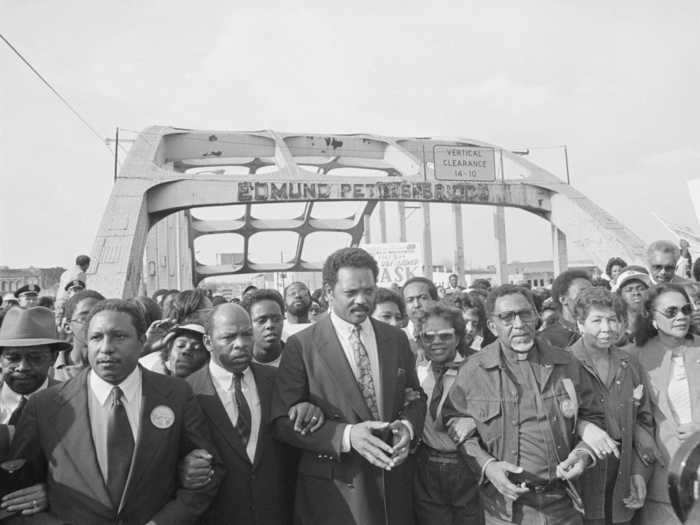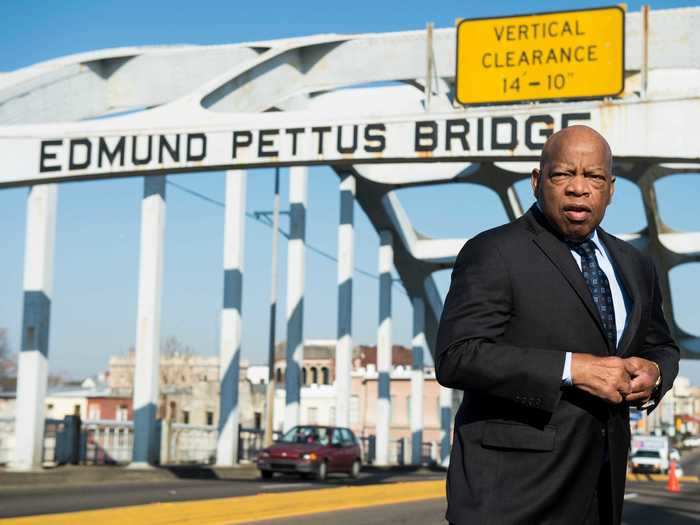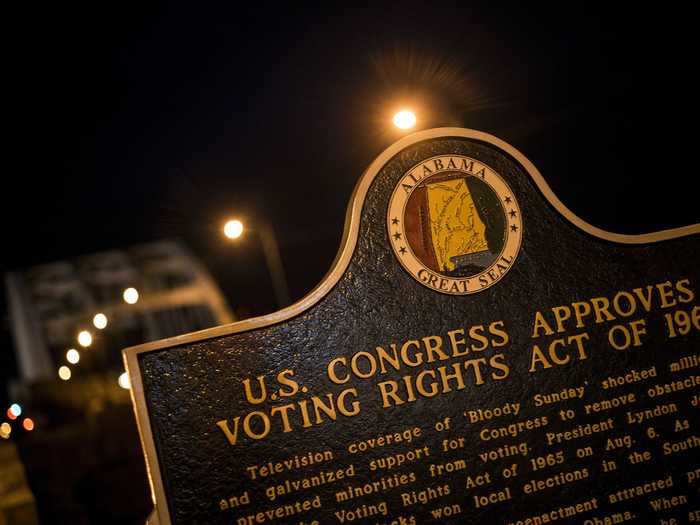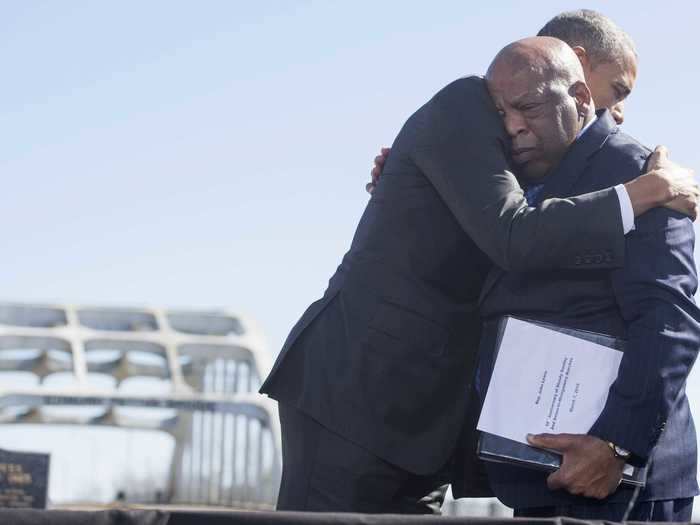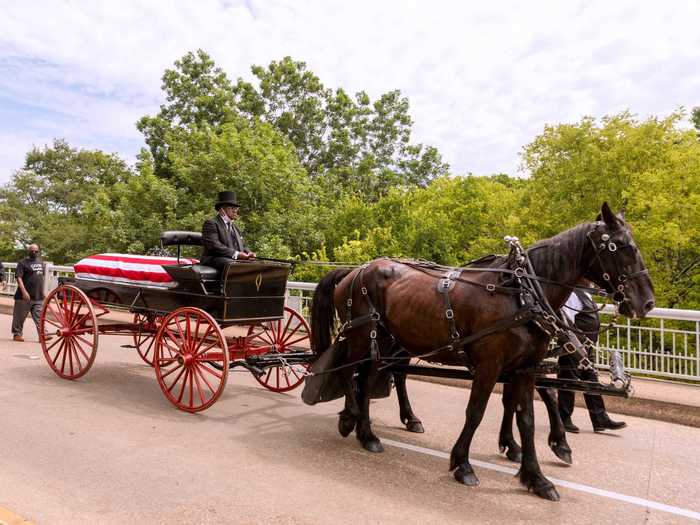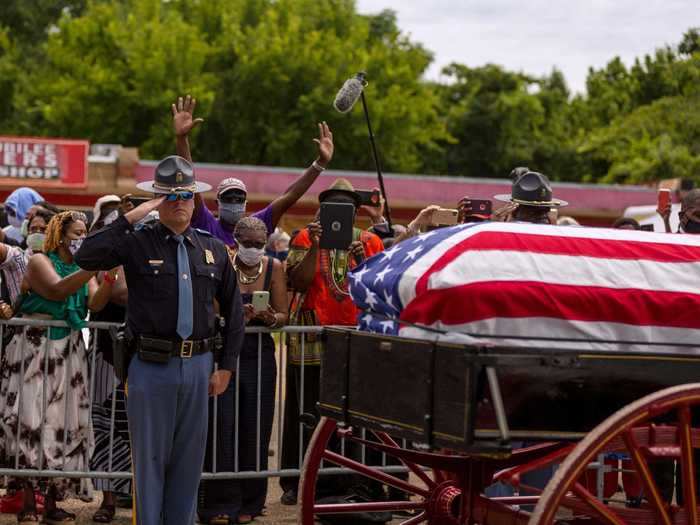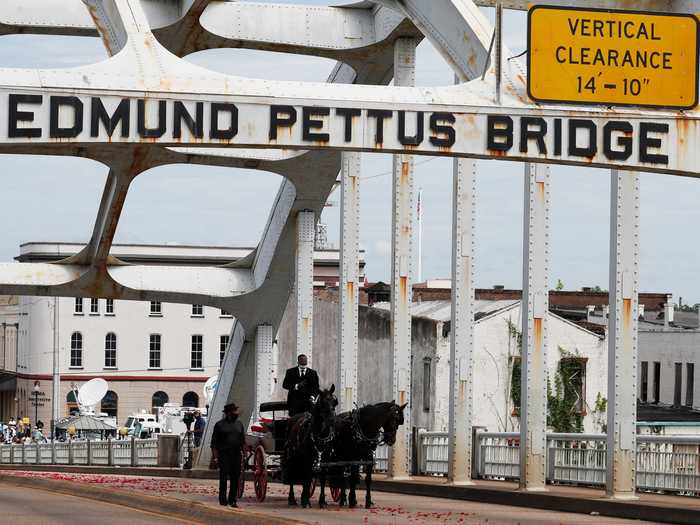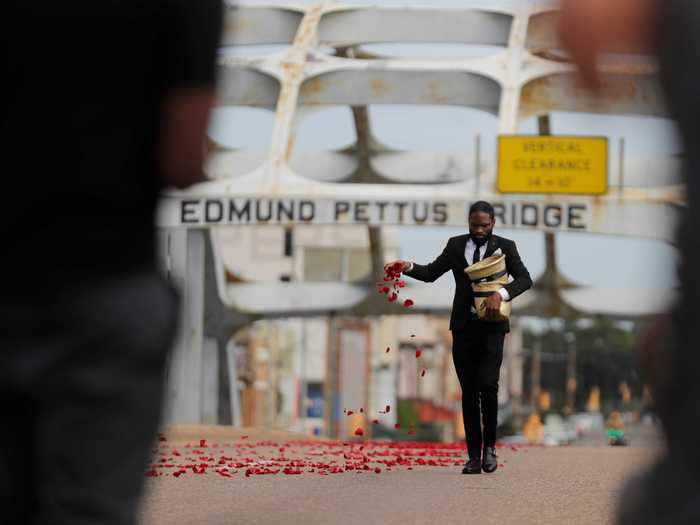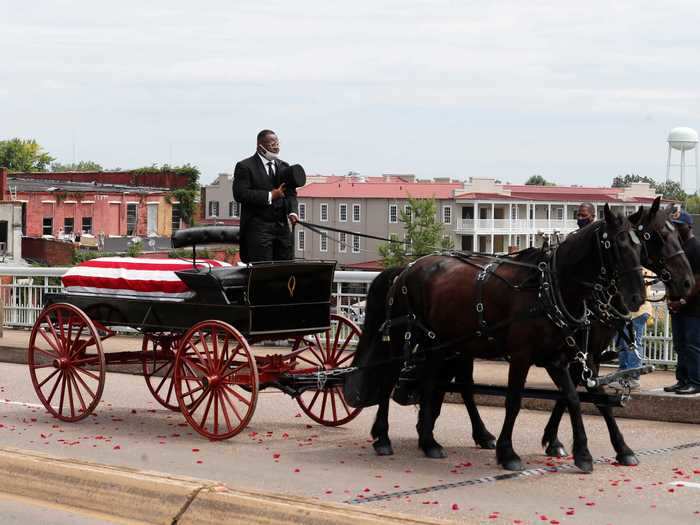John Lewis crosses Pettus Bridge one last time.John Bazemore/ AP
- On Sunday, Congressman John Lewis' body was taken across the Edmund Pettus Bridge in Selma, Alabama, one last time for a memorial event called "A Final Crossing."
- In 1965, Lewis crossed this bridge with hundreds of other activists to fight for African American voting rights. The Alabama State Troopers met them with violence, naming the day Bloody Sunday.
- Lewis returned to the bridge in 2015 with President Barack Obama on the 50th Anniversary of Bloody Sunday.
- Lewis died on July 17 and his days-long memorial included a "Final Crossing" event, where crowds and troopers saluted and honored the fallen American hero with songs and flowers.
Congressman John Lewis was known for being an activist, a fighter, and a hero. He was most notably remembered for his famous crossing of the Edmund Pettus Bridge in Selma, Alabama over 55 years ago.
The bloody and deadly day — Sunday, March 7, 1965 — went down in history books and ultimately helped the passage of the Voting Rights Act. On Sunday, more than a week after Lewis' death, his body crossed the bridge one last time in what was called, "A Final Crossing."
Take a look back at Lewis' experiences with the infamous bridge and see what the memorial event looked like.
John Lewis first crossed Edmund Pettus Bridge in 1965 to raise awareness about African American voting rights.
John Lewis with other protestors at Edmund Pettus Bridge in 1965.
Bettmann / Getty
"We're marching today to dramatize to the nation, dramatize to the world the hundreds and thousands of Negro citizens of Alabama that are denied the right to vote," Lewis said at the time. "We intend to march to Montgomery to present said grievance to Governor George C. Wallace."
When Lewis and hundreds of other protestors reached the bridge in Selma, they were met by Alabama State Troopers.
John Lewis decades later.
Bill Clark / Getty
The troopers attacked the protestors with canes, whips, and clubs. Lewis was beaten to the ground.
"I thought I was going to die," Lewis told NPR in 2010. "I thought I saw death."
The infamous day, which was televised at the time, became known as Bloody Sunday.
The day helped usher in the Voting Rights Act of 1965.
The Voting Rights Act plaque in front of Edmund Pettus Bridge.
BRENDAN SMIALOWSKI / Getty
The Voting Rights Act prohibits racial discrimination when it comes to voting.
Lewis returned to the bridge in 2015 to cross it with then-President Barack Obama.
President Barack Obama and John Lewis.
SAUL LOEB / Getty
To commemorate the 50th anniversary in 2015, Obama and Lewis crossed the bridge in Selma again.
"[It was] not a clash of armies, but a clash of wills; a contest to determine the meaning of America," President Obama said.
On Sunday, Lewis' body crossed the bridge a final time.
Lewis in the casket crossing the bridge.
Lynsey Weatherspoon / Getty
His body was pulled in a horse-drawn carriage.
The carriage and casket took the same route that Lewis took back in 1965. This time, however, troopers were saluting him.
Troopers saluted Lewis' body.
Lynsey Weatherspoon / Getty
"John was determined to fight for equality and justice, putting his own life on the line in the service of others and a brighter future for everyone," Congresswoman Terri Sewell said, according to CBS News. "John crossed bridges so many times, insisting that our nation live up to the ideals upon which it was founded. As he always said, he gave a little blood on that bridge."
People waited for the casket to the cross the bridge as they sang in remembrance of Lewis.
Lewis in the casket crossing the bridge.
John Bazemore/ AP
Before the casket approached, the crowd sang, but as soon as Lewis' carriage entered the infamous bridge, the crowd went silent.
Rose petals lined the streets to honor the American activist and hero.
The bridge was filled with rose petals.
Brynn Anderson/ AP
"Our nation is better off because of John Robert Lewis," Sewell remarked. "My life is better, Selma is better, this nation and this world is better because of John Robert Lewis."
On Monday, Lewis' body will be laid at the U.S. Capitol in Washington, D.C.
Lewis in the casket crossing the bridge.
John Bazemore/ AP
The public can pay their respects to the congressman Monday afternoon.

